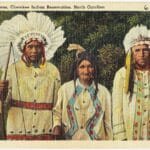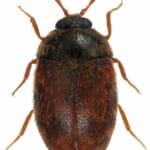Journey back to the land of pharaohs and pyramids, where amongst the hieroglyphs and towering monuments, a small but potent symbol holds court: the scarab beetle. This unassuming creature, in the eyes of the ancient Egyptians, embodied the profound concepts of rebirth, transformation, and the eternal journey of the soul. Let us delve into the rich tapestry of meaning woven around this sacred insect, exploring its significance in ancient Egypt and its enduring resonance in the modern world.
The Scarab’s Symbolic Power in Ancient Egypt
The scarab beetle held far more than mere entomological interest for the ancient Egyptians; it served as a potent symbol laden with spiritual and cultural significance. Like a miniature, six-legged talisman, it embodied the very essence of life, death, and resurrection, echoing the cyclical nature of existence that permeated their worldview.
Observe the humble beetle diligently rolling its ball of dung across the desert sands. To the ancient Egyptians, this seemingly mundane act was a powerful metaphor for creation. From seemingly insignificant matter, the scarab fashioned something new, a microcosm of the universe itself. This act likely linked the scarab to Khepri, the god of the rising sun, further solidifying its association with renewal and rebirth. Each sunrise, like the scarab’s emergence from the earth, heralded a fresh start, a promise of continued existence.
This association with Khepri intertwined the scarab with the sun god Ra and his celestial journey. Ra’s passage across the sky, his nightly descent and subsequent morning rebirth, mirrored the scarab’s own life cycle. The beetle’s disappearance into the sand and its eventual re-emergence probably solidified its connection to resurrection and the eternal cycle of life, death, and rebirth within the Egyptian consciousness.
Beyond its cosmic symbolism, the scarab also served as a personal amulet of protection. People from all strata of ancient Egyptian society, from the pharaoh to the farmer, wore scarab amulets. These were not mere adornments; they were believed to ward off evil, misfortune, and illness, acting as a tangible link between the wearer and the divine. These amulets also commonly symbolized the promise of a long and healthy life, offering comfort and reassurance in a world often fraught with peril.
The Scarab’s Enduring Legacy
The scarab’s influence extended beyond the borders of ancient Egypt, its message of transformation and hope resonating with other cultures throughout the ancient world. While interpretations may have varied, the core concept of rebirth and renewal struck a universal chord.
Even today, millennia later, the scarab beetle retains a symbolic potency. For some, it represents freedom, the courage to embark on new ventures, and the journey of personal growth. Spotting a scarab might be interpreted as an auspicious sign, a subtle message of encouragement from the universe. Others associate the scarab with omens, suggesting a deeper connection to the spiritual realm.
The scarab’s symbolism is multifaceted, like a precious gem reflecting light from various angles. It embodies life, death, and rebirth, serving as a protective charm and an emblem of transformation and hope. Its enduring presence throughout history testifies to its profound impact on human hearts and minds.
It is crucial to acknowledge that our understanding of ancient Egyptian beliefs is continually evolving. Archaeologists continue to unearth new discoveries, and scholars reinterpret existing evidence in light of new findings. While we can posit certain interpretations with a degree of confidence, much remains shrouded in mystery. Some experts suggest, for instance, that the specific materials chosen for scarab amulets may have conveyed additional layers of meaning. This remains an area of ongoing research, and future discoveries may further illuminate our understanding of this captivating symbol.
| Feature | Symbolic Meaning |
|---|---|
| Dung Rolling | Creation, Renewal, The Sun’s Journey |
| Khepri | Rising Sun, Rebirth, Creation |
| Ra’s Journey | Cycle of Life, Death, Rebirth |
| Amulet | Protection, Long Life, Safe Passage to the Afterlife |
| Modern Usage | Freedom, Exploration, Personal Growth, Spiritual Enlightenment |
The profound significance ascribed to such a small creature is truly remarkable. The scarab beetle serves as a potent reminder that even the smallest among us can have a profound impact, and that the cycles of life, death, and rebirth are fundamental aspects of the human experience. [If you’re intrigued by the natural world and its symbolism, you might be interested in learning more about the anatomy of a sheep’s pluck or exploring a sheep brain dissection labeled.]
Decoding the Myth of the Scarab Beetle
The scarab beetle held a unique position within the spiritual landscape of ancient Egypt. It was not merely an insect; it was a tiny, crawling embodiment of hope and renewal, a potent symbol of fresh beginnings. This symbolism stemmed from the Egyptians’ observation of the scarab’s life cycle, which they linked to the sun god Khepri. They envisioned Khepri rolling the sun across the sky each day, much like the scarab rolls its ball of dung. While this understanding of celestial mechanics differs from our modern scientific perspective, it reflects the ancient Egyptians’ deep connection to the natural world and their attempts to understand the cosmos through observable phenomena.
The scarab begins its life within a ball of dung. The ancient Egyptians viewed this sphere as a microcosm of the earth, and the beetle’s emergence from it symbolized rebirth. Just as the scarab transforms from a larva into a fully formed beetle, they believed humans, too, could undergo a similar transformation after death. This belief is evident in the prevalence of scarab amulets in burial rituals. These amulets were not mere decorations but powerful symbols meant to facilitate a smooth transition into the afterlife. Often placed directly over the heart of the deceased, the scarab amulet served as a spiritual compass, guiding the soul on its journey and ensuring its successful rebirth.
Not all scarabs served a purely religious function. Some were decorative, incorporated into jewelry and seals as symbols of good luck or status, much like modern-day lucky charms. Larger, intricately carved scarabs could commemorate significant events or serve as personal seals. The specific meaning of a scarab could vary depending on its size, material, and depiction. For example, a scarab with outstretched wings might symbolize the soul taking flight, while one rolling a dung ball could represent the cyclical nature of existence.
Our understanding of ancient Egyptian beliefs is an ongoing process. Archaeologists continue to uncover new artifacts and texts, and scholars continually refine their interpretations of existing evidence. Current understandings may be revised or expanded upon by future discoveries. Some researchers suggest that the scarab’s association with dung may also have linked it to concepts of fertility and creation, as dung fertilizes the fields. This interpretation further enriches the scarab’s symbolism, connecting it not only to death and rebirth but also to the continuous cycle of life.
This layered symbolism makes the scarab beetle a source of ongoing fascination. It was not simply a beautiful insect but a potent symbol embodying the deepest hopes and beliefs of a remarkable civilization. Undoubtedly, more remains to be uncovered about this small creature and the secrets it holds about ancient Egyptian culture.
| Feature | Symbolic Meaning |
|---|---|
| Dung Ball | Earth, Cycle of Life, Creation, Fertility |
| Beetle Emerging | Rebirth, Transformation |
| Wings | Flight of the Soul, Freedom |
| Rolling a Dung Ball | Cyclical Nature of Life, Khepri Pushing the Sun |
| Placement on Heart | Ensuring Rebirth in the Afterlife |
| Material/Size | Varied Significance Depending on Context |
While much of our current understanding is based on archaeological evidence and scholarly interpretations, ongoing research continues to offer new insights into the scarab’s multifaceted symbolism.
The Scarab’s Significance in Ancient Egyptian Life
The ancient Egyptians perceived the seemingly ordinary act of a scarab beetle rolling a dung ball as something extraordinary—a symbol of rebirth. The beetle’s emergence, fully formed, from this humble sphere resonated deeply with their understanding of life springing forth from apparent lifelessness. This potent image mirrored their beliefs about the cyclical nature of existence, with death serving not as an end, but as a transition to renewed life. They likely saw a parallel between the scarab’s transformation and the sun’s daily journey—disappearing below the horizon only to be reborn each morning.
This solar connection is further strengthened by the figure of Khepri, the Egyptian god often depicted with a scarab beetle head. Khepri, the celestial driver, piloted the sun across the sky each day. This daily solar cycle became inextricably linked with the scarab’s life cycle, associating the beetle not only with rebirth but also with the act of creation itself. The scarab, therefore, represented not just the return to life, but the ongoing renewal of the world, the continuous cycle of existence.
Beyond its symbolic association with rebirth and the sun god, the scarab also served a practical purpose within Egyptian funerary practices. These small, carved beetles were placed over the heart of the mummy, functioning as powerful amulets. They were believed to offer protection and guidance on the perilous journey to the next world, ensuring a smooth transition into the afterlife and a successful rebirth. Some scholars suggest that specific spells and prayers may have been inscribed on these amulets, imbuing them with additional protective power.
Despite its small stature, the scarab beetle held immense significance within ancient Egyptian culture. It embodied the cyclical nature of existence, the power of the sun, and the hope for renewal beyond death. The scarab serves as a testament to the ancient Egyptians’ keen observation of the natural world and their ability to find profound meaning in the smallest of creatures.
| Feature | Significance |
|---|---|
| Dung Ball | Represents the apparent lifelessness from which new life emerges, mirroring the cyclical nature of life, death, and rebirth. |
| Transformation | Symbolizes the process of rebirth and renewal, echoing the daily journey of the sun. |
| Sun God Khepri | Connects the scarab to solar power, creation, and the continuous cycle of existence. |
| Amulet | Provides protection and guidance in the afterlife, ensuring a smooth transition and successful rebirth. |
While much of our current understanding of scarab symbolism is based on established research, the field of Egyptology continues to evolve. There may be subtle nuances and regional variations in how the scarab was perceived and utilized. Ongoing research continues to explore these possibilities, adding further layers to our understanding of this complex and fascinating symbol.
- Unlock Water’s Symbolism: A Cross-Cultural Exploration - April 20, 2025
- Identify Black and White Snakes: Venomous or Harmless? - April 20, 2025
- Unlocking Potential: Origins High School’s NYC Story - April 20, 2025














